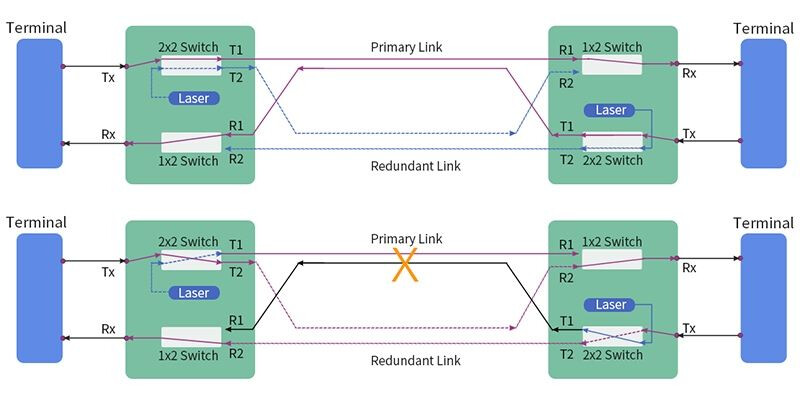- Head-End Bridging and Tail-End Switching are commonly used methods for implementing protection.
- These fall under a broader technique known as Optical Protection Switching (OPS).
- OPS cards can be deployed in various locations—client devices, muxponders, multiplex sections, amplifiers, or OTS—to implement different protection schemes.
- When designing a WDM network, it’s essential to plan how traffic will be protected in the event of a failure.
- (Number skipped in original)
- Failures can arise from either link issues (e.g., fiber cuts) or equipment faults (e.g., muxponder or amplifier failure).
- Protection involves the pre-allocation of backup resources, which remain on standby to carry traffic if a failure occurs.
- Restoration refers to the dynamic allocation of an alternate route or resource only after a failure has been detected.
- Unlike protection, restoration does not involve static resource reservation; resources are assigned when needed.
- In restoration, the system dynamically calculates an alternate route in real-time during a failure.
- Switching time is critical—it should not exceed 50 milliseconds to maintain service quality.
- It’s important to regularly test the protection mechanism by switching from main to standby paths to ensure it functions correctly.
- (Also skipped in original)
- Note: The term “network survivability” refers to the network’s ability to recover from failures.
Question to Consider:
What gives protection an advantage over restoration, and vice versa?
LinkedIn: ![]()
